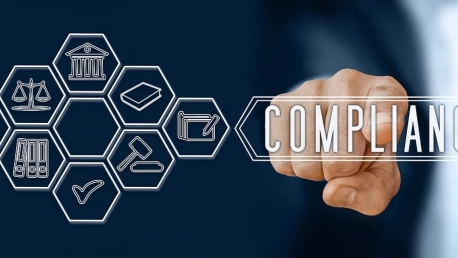In an age where digital advancements are rapidly reshaping the business landscape, IT compliance has risen to become a cornerstone of modern enterprise. As technology becomes increasingly interwoven with day-to-day business functions, safeguarding sensitive data and building trust with customers has never been more imperative. IT compliance serves as the backbone for this initiative, harmonizing the demands of legal regulations with the necessity for robust cybersecurity defenses. Through the convergence of these two elements, organizations can not only ensure the integrity and security of their operations but also establish themselves as reliable entities that customers can confidently engage with. Adherence to IT compliance is more than avoiding penalties—it’s about crafting a secure environment where trust flourishes, and business thrives.
The Intersection of IT Compliance and Security
IT compliance and security are two sides of the same coin, essential in crafting a comprehensive approach for protecting an organization’s digital assets. Compliance isn’t merely about meeting the minimum standards set by regulations but about setting the groundwork for a defense-in-depth strategy that secures data against emerging threats. A strong IT compliance framework establishes protocols for access management, network security, data encryption, and more, ensuring these measures align with legal standards designed to protect consumer data. As businesses navigate the complexities of IT security, compliance provides an invaluable guidepost, integrating industry best practices with regulatory requirements to achieve a state of proactive security readiness.The success of a business’s IT compliance hinges on an acute understanding of its objectives. Far beyond the notion of checking off regulatory requirements, compliance calls for establishing a resilient IT landscape where proactive security measures shield against cyber threats. A business that prioritizes IT compliance commits to the ongoing safeguarding of customer data, thus strengthening its defensive posture and ensuring operational continuity. When compliance and security strategies align, businesses can fortify their data protection efforts and adapt quickly to the shifting tides of cyber threats and legal mandates.
Importance of IT Compliance in Business
The value of IT compliance transcends legal mandates; it contributes significantly to the strategic foundations of any business. Disregarding compliance standards can lead to catastrophic outcomes, from crippling financial penalties to irreversible reputational damage. These repercussions underscore compliance as a business imperative, pivotal in asserting a company’s credibility and dedication to data protection. Committed compliance elevates a business’s stature, fostering customer trust and mitigating risks related to cybersecurity.Non-compliance risks are extensive, ranging from financial liabilities to operational disruptions and beyond. Regulatory bodies are vested with the authority to impose fines and demand corrective actions from businesses that fail to abide by the established guidelines. However, perhaps even more severe than financial repercussions, is the erosion of trust that can result from a data breach or non-compliance incident. Operational integrity and trustworthiness are integral to a business’s reputation, and compliance represents the shield defending these assets. As cyber threats evolve, IT compliance remains crucial in ensuring a business remains well-protected and trusted by its customers and partners.
Key Regulations Affecting Businesses
Understanding the labyrinth of IT compliance regulations is crucial for businesses aiming to protect their data and maintain customer trust. With regulations like HIPAA, PCI-DSS, SOC 2, SOX, GDPR, and CMMC shaping the compliance landscape, each brings its unique set of standards to bear on how organizations manage and secure data. HIPAA ensures patient data confidentiality in the healthcare sector; PCI-DSS defines the safeguarding measures for credit card transactions; SOC 2 pertains to the handling of customer data in the technology sector; SOX oversees corporate financial practices; GDPR guards personal data across the European Union; and CMMC protects information within the U.S. defense supply chain.Each regulation comes with specific compliance standards that businesses must adhere to, ensuring the safe management of different types of sensitive data. For instance, GDPR enforces stringent rules around data consent and the right to be forgotten, while SOX requires meticulous internal controls for financial reporting to prevent fraud and instill investor confidence. It’s crucial for businesses to not only be aware of these regulations but also understand their impact across various sectors. With an awareness of each law’s specifics, organizations can tailor their IT compliance strategies to meet the dual goals of regulatory alignment and enhanced data security.
Strategies for Achieving and Sustaining IT Compliance
Developing and upholding a compliant IT environment necessitates a multi-faceted approach, incorporating best practices that align with the diverse requirements of various regulations. From rigorous identity and access management to fortified data controls and a responsive incident strategy, businesses must weave these elements into their compliance fabric. Each plays a pivotal role in not only meeting regulatory benchmarks but also in fortifying the organization’s defenses against unauthorized access and data breaches.Continual activity monitoring, coupled with comprehensive reporting, allows for real-time insights into the health and security of IT infrastructures, ensuring compliance is maintained and any deviations are addressed swiftly. Similarly, ongoing policy development fosters a culture of compliance, where best practices are ingrained in the daily operations of a business. With the threat landscape and regulations ever-evolving, these strategies are not static; they must adapt proactively to ensure continued alignment with the rigid standards that govern IT compliance.
Overcoming IT Compliance Challenges
The ever-changing nature of cyber legislation presents a significant challenge to businesses striving to remain compliant. Staying abreast of new regulations and seamlessly integrating them into operations can be daunting. Moreover, the intricate relationship between evolving technology and legislation can confound even the most well-intentioned compliance efforts, calling for a dynamic approach to IT governance.Businesses must not only monitor for changes in regulations but also be prepared to quickly adapt their compliance strategies in response. Doing so requires not just an understanding of the laws but a practical approach to weaving compliance into the very fabric of organizational processes. Companies that approach compliance as a fluid, ongoing commitment can better adjust to regulatory changes and consistently execute effective compliance measures.
Leveraging Expertise for Compliance Assurance
Entrusting IT compliance to managed services and cybersecurity experts such as Vivitec can vastly simplify the pursuit of compliance while ensuring alignment with industry regulations. Specialized providers bring to bear a depth of knowledge and experience, navigating the complexities of regulations and mitigating risks associated with non-compliance. These experts can streamline the audit preparation process, fortifying an organization’s security posture and keeping it a step ahead in the domain of cybersecurity and IT governance.Hiring expert services entails much more than delegating responsibility; it signifies a partnership aimed at enhancing a business’s resilience in the face of cyber threats. By leveraging such expertise, businesses can focus on driving growth and innovation while resting assured that their IT compliance needs are managed effectively. In an era defined by digital transformation and rapidly evolving cyber threats, the importance of such partnerships cannot be overstated, making them an investment in both present security and future trust.









